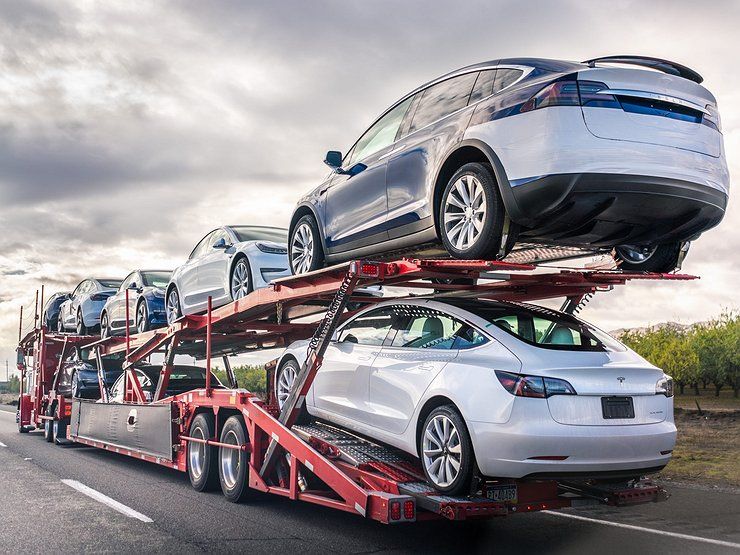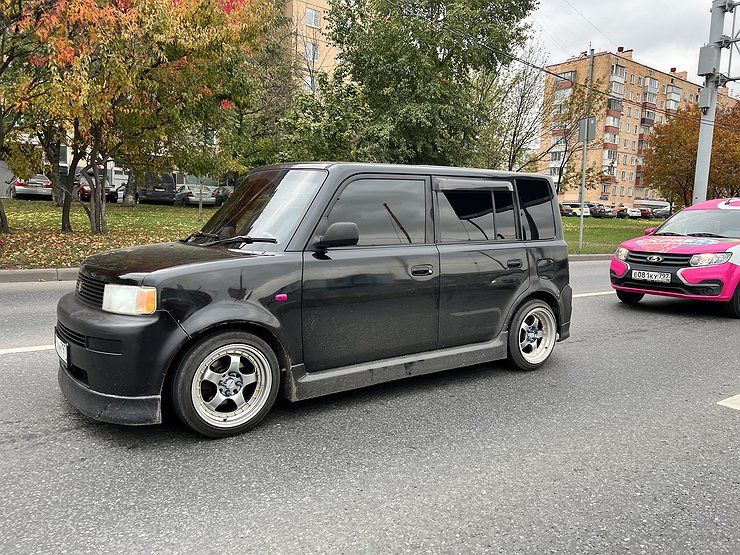Results of parallel imports: welcome to the new “heady 90s”
- December 21, 2022
- 0
Almost 10 months have passed since that February 24, during which every Russian has experienced the entire palette of emotions: from black to white. The world around us
Almost 10 months have passed since that February 24, during which every Russian has experienced the entire palette of emotions: from black to white. The world around us

Talking to experts and figures in the automotive market throughout the year, we can safely identify a common trend: this has never happened before. Such a flurry, the ninth wave, swept away not only all agreements, but also the rules of the game in one fell swoop. Literally in a matter of days, dealer agreements have turned into a “letter from filkin”, and many – not all, but most – automakers have stopped supply.
The cornerstones of the company – warranty, original parts, brand credit – disappeared in the blink of an eye. Not only the purchase, but also the operation of the car was turned upside down. This conclusion is confirmed by a conversation with Alexander Tsverkunov, general director of the regional dealer network “MC Group”:
– Even during the Covid-19 pandemic, we did not have such a decline. It was much easier to find a new working principle, we quickly developed the mechanics of customer service. There were few cars, yes, but there were parts, and any dealer can survive if there is service. In the same year, everything changed fundamentally: from sales to service. It’s too late to drink Borjomi, you have to start from a new page, because those who continue to bend the old line will eventually be out of work …
The key element of the very “new line” that will bow to dealers, gas stations and car owners in the coming months, if not years, is parallel importation – the importation of products without permission from the copyright holder. Simply put, it is no longer necessary to obtain permission from the distributor to trade. In parallel with the adoption of the relevant document by the country’s government, there was a worldwide appreciation of the ruble.
At the same time, this “maneuver” led to very curious events: Mitsubishi Pajero Sport and Toyota Land Cruiser Prado drove from the Emirates and Kazakhstan, and their prices fell sharply. For example, the new “Sport” was sold at dealers for 6 million rubles, and from “gray exporters” first for 4 million, and then for three! For a long time, third place in the popularity rating was completely occupied by the classic Pajero, which was withdrawn from sale two years ago because it was “unpopular”. It turns out that the old Pajero is very popular, right on trend!
The new Outlander, along with the previously unknown Xpander, the Nissan Patrol and the Cadillac with Chevy, and the “unnecessary”, but for some reason now popular Ford pickups, arrived in Russia via “parallel” routes. It is possible to list for a long time, but it is easier to immediately name the numbers: parallel imports brought to Russia 500 models of 85 brands, while officially we sell only 68 different cars from 17 manufacturers, according to the Avtostat agency. Facial difference.
Indeed, there has not been such diversity in our streets since the 1990s. The explanation is quite simple: for the price of LADA Vesta you can buy an interesting foreign car from a dealer. However, not everyone can buy it. After all, three out of four parallel imports involve cash or consumer credit, which, let me remind you, have risen sharply in price this year.
There are no proprietary programs, leasing and other already known tools and are not expected either, so you will have to pay for a new car at once. And few people can afford it. In addition, cars from the universe of “parallel” are not covered by the manufacturer’s warranty, there are often problems with spare parts – well, where to find a bumper or a headlight on a Mitsubishi Xpander, for example? In Thailand? How to transfer money there? There are more questions than answers.
You can no longer just come to the dealer and pass all the worries on to him by handing over the key. Even insurance companies will not help: although they are ready to take imported cars for insurance, the probability of repair is extremely illusory – wrecked cars wait many months for spare parts.
Parallel imports were able to partially close the gap in the market by delivering up to 200 cars a day “to the shelves”, but they could not fully cover the vast country’s huge technology needs. And it will not be able to: the full functioning of the market requires a stable and regular supply, which can only be achieved in one way: the revival of contractual relations with the manufacturer.
However, it also becomes difficult for the latter: how can you sell a car for five million if you can buy it for three? However, the news and gossip that come “from the fields” give a big hint: the manufacturers do not intend to dwell too long on their sanctions. The parallel imports, which officially started in May, brought 2.4 million tons of goods to Russia with a total value of $20,000,000,000. Yes: twenty billion “dollars”.


Talking to experts and figures in the automotive market throughout the year, we can safely identify a common trend: this has never happened before. Such a flurry, the ninth wave, swept away not only all agreements, but also the rules of the game in one fell swoop. Literally in a matter of days, dealer agreements have turned into a “letter from filkin”, and many – not all, but most – automakers have stopped supply.
The cornerstones of the company – warranty, original parts, brand credit – disappeared in the blink of an eye. Not only the purchase, but also the operation of the car was turned upside down. This conclusion is confirmed by a conversation with Alexander Tsverkunov, general director of the regional dealer network “MC Group”:
– Even during the Covid-19 pandemic, we did not have such a decline. It was much easier to find a new working principle, we quickly developed the mechanics of customer service. There were few cars, yes, but there were parts, and any dealer can survive if there is service. In the same year, everything changed fundamentally: from sales to service. It’s too late to drink Borjomi, you have to start from a new page, because those who continue to bend the old line will eventually be out of work …
The key element of the very “new line” that will bow to dealers, gas stations and car owners in the coming months, if not years, is parallel importation – the importation of products without permission from the copyright holder. Simply put, it is no longer necessary to obtain permission from the distributor to trade. In parallel with the adoption of the relevant document by the country’s government, there was a worldwide appreciation of the ruble.
At the same time, this “maneuver” led to very curious events: Mitsubishi Pajero Sport and Toyota Land Cruiser Prado drove from the Emirates and Kazakhstan, and their prices fell sharply. For example, the new “Sport” was sold at dealers for 6 million rubles, and from “gray exporters” first for 4 million, and then for three! For a long time, third place in the popularity rating was completely occupied by the classic Pajero, which was withdrawn from sale two years ago because it was “unpopular”. It turns out that the old Pajero is very popular, right on trend!
The new Outlander, along with the previously unknown Xpander, the Nissan Patrol and the Cadillac with Chevy, and the “unnecessary”, but for some reason now popular Ford pickups, arrived in Russia along “parallel” routes. It is possible to list for a long time, but it is easier to immediately name the numbers: parallel imports brought to Russia 500 models of 85 brands, while officially we sell only 68 different cars from 17 manufacturers, according to the Avtostat agency. Facial difference.
Indeed, there has not been such diversity in our streets since the 1990s. The explanation is quite simple: for the price of LADA Vesta you can buy an interesting foreign car from a dealer. However, not everyone can buy it. After all, three out of four parallel imports involve cash or consumer credit, which, let me remind you, have risen sharply in price this year.
There are no proprietary programs, leasing and other already known tools and are not expected either, so you will have to pay for a new car at once. And few people can afford it. In addition, cars from the universe of “parallel” are not covered by the manufacturer’s warranty, there are often problems with spare parts – well, where to find a bumper or a headlight on a Mitsubishi Xpander, for example? In Thailand? How to transfer money there? There are more questions than answers.
You can no longer just come to the dealer and pass all the worries on to him by handing over the key. Even insurance companies will not help: although they are ready to take imported cars for insurance, the probability of repair is extremely illusory – wrecked cars wait many months for spare parts.
Parallel imports were able to partially close the gap in the market by delivering up to 200 cars a day “to the shelves”, but they could not fully cover the vast country’s huge technology needs. And it will not be able to: the full functioning of the market requires a stable and regular supply, which can only be achieved in one way: the revival of contractual relations with the manufacturer.
However, it also becomes difficult for the latter: how can you sell a car for five million if you can buy it for three? However, the news and gossip that come “from the fields” give a big hint: the manufacturers do not intend to dwell on their sanctions for too long. The parallel imports, which officially started in May, brought 2.4 million tons of goods to Russia with a total value of $20,000,000,000. Yes: twenty billion “dollars”.
Source: Avto Vzglyad
Donald Salinas is an experienced automobile journalist and writer for Div Bracket. He brings his readers the latest news and developments from the world of automobiles, offering a unique and knowledgeable perspective on the latest trends and innovations in the automotive industry.